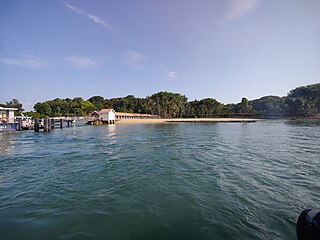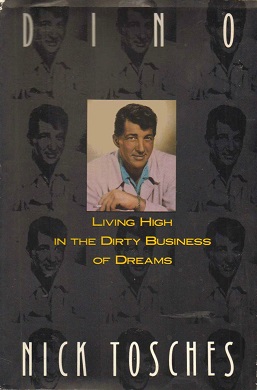
Opium is dried latex obtained from the seed capsules of the opium poppy Papaver somniferum. Approximately 12 percent of opium is made up of the analgesic alkaloid morphine, which is processed chemically to produce heroin and other synthetic opioids for medicinal use and for the illegal drug trade. The latex also contains the closely related opiates codeine and thebaine, and non-analgesic alkaloids such as papaverine and noscapine. The traditional, labor-intensive method of obtaining the latex is to scratch ("score") the immature seed pods (fruits) by hand; the latex leaks out and dries to a sticky yellowish residue that is later scraped off and dehydrated. The word meconium historically referred to related, weaker preparations made from other parts of the opium poppy or different species of poppies.

The spice trade involved historical civilizations in Asia, Northeast Africa and Europe. Spices such as cinnamon, cassia, cardamom, ginger, pepper, nutmeg, star anise, clove, and turmeric were known and used in antiquity and traded in the Eastern World. These spices found their way into the Near East before the beginning of the Christian era, with fantastic tales hiding their true sources.

Saint John's Island also known as St John's is an island in the Straits of Singapore located 6.5 km off the southern coast of Singapore. With an area of 0.41 km2 (0.16 sq mi), it is the largest of the Marine Park islands which also include the Sisters' Islands and Pulau Tekukor. St John's was colonised by the British along with mainland Singapore in the 19th century and was the site of a colonial quarantine centre. In the 20th century, the island served as a detention centre, drug rehabilitation centre and refugee settlement. Singapore gained independence under the Government of Singapore in the mid-20th century and maintained sovereignty over St John's. In the present day, the island has doubled as grounds for recreational facilities and aquaculture research and development facilities.
Nicholas P. Tosches was an American journalist, novelist, biographer, and poet. His 1982 biography of Jerry Lee Lewis, Hellfire, was praised by Rolling Stone magazine as "the best rock and roll biography ever written."

The United States Central Intelligence Agency (CIA) has been accused of involvement in the trafficking of illicit drugs. Books and journalistic investigations on the subject that have received general notice include works by the historian Alfred McCoy, professor and diplomat Peter Dale Scott, journalists Gary Webb and Alexander Cockburn, and writer Larry Collins. These claims have led to investigations by the United States government, including hearings and reports by the United States House of Representatives, Senate, Department of Justice, and the CIA's Inspector General. The various investigations have generally not led to clear conclusions that the CIA itself has directly conducted drug trafficking operations, although there may have been instances of indirect complicity in the activities of others.

The Golden Triangle is a large, mountainous region of approximately 200,000 km2 (77,000 sq mi) in northeastern Myanmar, northwestern Thailand and northern Laos, centered on the confluence of the Ruak and Mekong rivers. The name "Golden Triangle" was coined by Marshall Green, a U.S. State Department official, in 1971 in a press conference on the opium trade. Today, the Thai side of the river confluence, Sop Ruak, has become a tourist attraction, with an Opium Museum, a Hall of Opium, and a Golden Triangle Park, and no opium cultivation.

Tony Carpenter is a fictional character from the BBC soap opera EastEnders, played by Oscar James, from 28 February 1985 until 28 May 1987.

An opium den was an establishment in which opium was sold and smoked. Opium dens were prevalent in many parts of the world in the 19th century, most notably China, Southeast Asia, North America, and France. Throughout the West, opium dens were frequented by and associated with the Chinese because the establishments were usually run by Chinese mobsters, who supplied the opium and prepared it for visiting non-Chinese smokers. Most opium dens kept a supply of opium paraphernalia such as the pipes and lamps that were necessary to smoke the drug. Patrons would recline to hold the long opium pipes over oil lamps that would heat the drug until it vaporized, allowing the smoker to inhale the vapors. Opium dens in China were frequented by all levels of society, and their opulence or simplicity reflected the financial means of the patrons. In urban areas of the United States, particularly on the West Coast, there were opium dens that mirrored the best to be found in China, with luxurious trappings and female attendants. For the working class, there were many low-end dens with sparse furnishings.

Hank Williams' discography is composed of 41 singles and 2 ten-inch LPs released during his six-year career; as well as posthumous work including: singles, compilation albums and previously unreleased material. During his lifetime, Williams placed 30 songs on Billboard's Top C&W Records, while he had eleven number one hits.

Tang Wing-Cheung, better known by his stage name Sun Ma Sze Tsang, was a Cantonese opera singer and actor in Hong Kong.

In the Hand of Dante is the third novel by Nick Tosches.

Dino: Living High in the Dirty Business of Dreams is a biography of Dean Martin written by Nick Tosches. It draws heavily from interviews Tosches did with Jerry Lewis, and with Martin's second wife and lifelong friend Jeanne Biegger. The story begins with the births of Martin's grandparents in Italy and follows his entire life up to the point of publication. It also includes sections in which Tosches writes in the first person from the point of view of Martin, a gonzo journalism style which would be used more frequently in his later non-fiction works.

Where Dead Voices Gather is a book by Nick Tosches. It is, in part, a biography of Emmett Miller, one of the last minstrel singers. Just as importantly, it depicts Tosches' search for information about Miller, about whom he initially wrote in his book Country: The Twisted Roots of Rock and Roll. It is also a study of minstrelsy and its connection to American folk music, country music, the blues and ultimately, rock and roll. In that way, it is a companion volume to his other books of music journalism, Country and Unsung Heroes of Rock N' Roll.
"The Window Up Above" is a song written and originally recorded by American country music artist George Jones. The version recorded by Jones peaked at number #2 on the country charts and spent a total of 34 weeks on the chart. It became a #1 smash for Mickey Gilley in 1975.

Muang Sing is a small town and district (muang) in Luang Namtha Province, northwestern Laos, about 60 kilometres northwest of the town of Luang Namtha and 360 kilometres northwest of Vientiane. It lies very close to the border with Yunnan, China, surrounded by mountains and rivers. Historically, Muang Sing has been a major producer of opium and still has problems with drugs and smuggling, due to its proximity to China and Myanmar.

Phongsaly province, also spelled Phôngsali, is a province of Laos in the extreme north of the country. The capital of the province is the city of Phôngsali. Phongsaly is between Yunnan (China), and Điện Biên province in Vietnam. Its culture has thus been historically heavily influenced by China.

A Chinatown developed in Phoenix in the 1870s as the predominantly single male Chinese population self-segregated primarily to provide cultural support to each other in a place where they faced significant discrimination. They came to dominate certain types of jobs and made an impression on the greater community with their celebrations of Chinese holidays. Other aspects of their culture, primarily gambling and the smoking of opium were viewed less favorably, and in the 1890s, they were forced to establish a new Chinatown several blocks away from the prior prime downtown location, where their community would be "less visible".

Opium production in Myanmar has historically been a major contributor to the country's gross domestic product (GDP). Myanmar is the world's largest producer of opium, producing some 25% of the world's opium, and forms part of the Golden Triangle. The opium industry was a monopoly during colonial times and has since been illegally tolerated, encouraged and informally taxed by corrupt officials in the Tatmadaw, Myanmar Police Force and rebel fighters, primarily as the basis for heroin manufacture. While opium poppy cultivation in Myanmar had declined year-on-year since 2015, cultivation area increased by 33% totalling 40,100 hectares alongside an 88% increase in yield potential to 790 metric tonnes in 2022 according to latest data from the United Nations Office on Drugs and Crime (UNODC) Myanmar Opium Survey 2022. With that said, the United Nations Office on Drugs and Crime (UNODC) has also warned that opium production in Myanmar may rise again if the economic crunch brought on by COVID-19 and the country's February 1 military coup persists, with significant public health and security consequences for much of Asia.
Carl A. Trocki is an American historian specializing in the history of Southeast Asia and China. He was formerly Professor of Asian Studies at the Queensland University of Technology and Director of the Centre for Community and Cross-Cultural Studies. He is a Fellow of the Australian Academy of the Humanities.

The history of opium in China began with the use of opium for medicinal purposes during the 7th century. In the 17th century the practice of mixing opium with tobacco for smoking spread from Southeast Asia, creating a far greater demand.

















